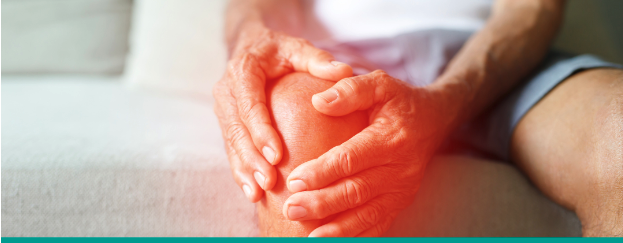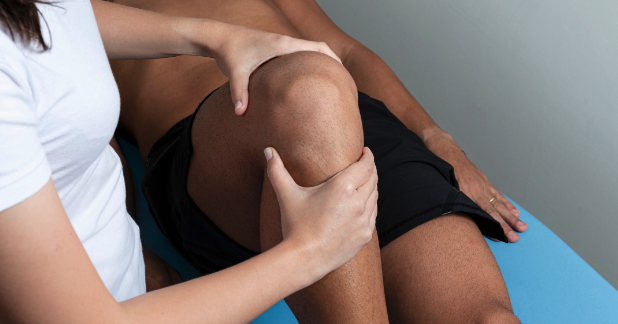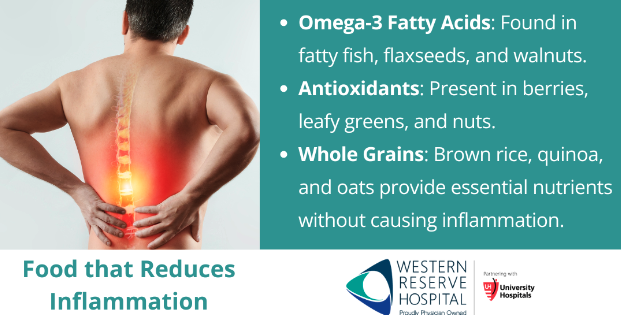
Managing joint pain can significantly improve quality of life. Western Reserve Hospital's Center for Pain Management uses a comprehensive, multimodal approach to address chronic joint pain, utilizing methods like chiropractic care, physical therapy, and behavioral health counseling. Western Reserve’s Nurse Practitioner at the Pain Center, Bethany Pontius, explains how WRH’s holistic approach to addressing joint pain with personalized care plans can help each patient live a fuller, more active life.
Understanding Joint Pain
Joint Pain Causes and Symptoms
Joint pain can result from various conditions, including arthritis, injuries, and general wear and tear. Understanding the underlying causes is essential for effective treatment. Arthritis, whether osteoarthritis or rheumatoid arthritis, is a common culprit. Injuries, overuse, and chronic conditions can also lead to persistent joint pain, impacting daily activities and overall quality of life. Common symptoms of joint pain include swelling, stiffness, and a decreased range of motion.
Starting with the WRH Pain Center
Bethany explains that at Western Reserve Hospital, once a patient is referred to the Center for Pain Management, there will be a full background check on all past medical history, imaging, and doctors’ notes to see if the Pain Center is appropriate. Once the patient is approved, they will be scheduled with one of the doctors “who comes up with a head-to-toe plan of care” personalized for each patient.
Physical Therapy, Exercise, and Movement for Joint Pain

Benefits of Physical Therapy
Physical therapy is a cornerstone in managing joint pain. It helps improve mobility, strengthen muscles around the joints, and reduce pain. Long-term benefits include increased functionality and a better quality of life. Tailored physical therapy, plans ensure that exercises are safe and effective for each patient’s condition.
Importance of Regular Exercise and Movement
Regular exercise and movement help maintain joint function and reduce pain. It prevents stiffness and improves overall joint health. Bethany emphasizes that “one of the best exercises is water therapy because you’re getting in, using your core strength, and it takes some of the pressure off of your joints.” Other types of exercises that are recommended for joint pain management include:
- Low-Impact Aerobics: Activities like swimming, cycling, and walking that are gentle on the joints.
- Strength Training: Using light weights or resistance bands to strengthen muscles around the joints.
- Flexibility Exercises: Stretching routines to maintain joint flexibility and reduce stiffness.
Creating a Personalized Exercise Plan
Developing a personalized exercise plan involves consultation with healthcare professionals. This ensures exercises are suitable and effective for the patient’s condition and fitness level. The team at Western Reserve Hospital assists in creating and monitoring these plans to maximize benefits and minimize risks.
Diet for Improving Joint Pain
Role of Diet in Reducing Inflammation
Diet plays a crucial role in managing inflammation, which is a common cause of joint pain. An anti-inflammatory diet can help reduce pain and improve joint health by decreasing inflammatory responses. At the Pain Center at WRH, “one of the things we do is send referrals to endocrinology” based on existing diagnoses. Doctors in endocrinology can assist with medical weight loss by checking bloodwork, looking for hormone imbalances, and “getting you on the right track to lose weight, which is going to help you with pain.” A diet rich in fruits, vegetables, lean protein, and whole grains can help decrease inflammation and pain.

Foods to Include
- Omega-3 Fatty Acids: Found in fatty fish, flaxseeds, and walnuts.
- Antioxidants: Present in berries, leafy greens, and nuts.
- Whole Grains: Options like brown rice, quinoa, and oats that provide essential nutrients without causing inflammation.
Foods to Avoid
- Processed foods, added sugar, and excessive red meat can all increase inflammation in the body.
Comprehensive Care at Western Reserve Hospital's Pain Center
When it comes to managing chronic joint pain, Western Reserve Hospital's Pain Center adopts a comprehensive, multimodal treatment approach. These personalized treatment plans combine various therapies to address the different aspects of pain, ensuring effective relief and improved quality of life for patients.
Anesthesia: Immediate Pain Relief
For patients suffering from severe chronic joint pain, anesthesia provides immediate and effective relief. The Pain Center employs different types of anesthesia, such as local anesthetics, nerve blocks, and epidural injections, depending on the patient's needs. These procedures are designed to reduce pain quickly, allowing patients to participate in other forms of therapy with less discomfort.
Chiropractic Care: Improving Alignment and Reducing Pain
Chiropractic care is a crucial component of the multimodal approach at Western Reserve Hospital. Chiropractic treatments can significantly reduce joint pain and improve overall function by focusing on spinal alignment and joint manipulation. Chiropractors at the Pain Center use techniques tailored to each patient's condition, ensuring personalized care.
- Chiropractic Techniques: Spinal manipulation, Joint mobilization, Soft tissue therapy
- Benefits: Improved joint function, Reduced pain and inflammation, Enhanced mobility and flexibility
Physical Therapy: Long-term Improvement
Physical therapy is essential for achieving long-term improvement in chronic joint pain management. The Pain Center's physical therapists develop individualized exercise programs focusing on strengthening muscles, improving flexibility, and enhancing joint stability. Regular physical therapy sessions help patients regain their strength and maintain a higher level of physical activity.
- Physical Therapy Exercises: Strength training, Flexibility exercises, Balance and coordination drills
- Benefits: Strengthened muscles around the joints, Improved joint stability, Increased range of motion
Behavioral Health & Counseling: Addressing Mental Health Aspects

Recognizing the strong connection between chronic pain and mental health, the Pain Center offers behavioral health services and counseling. Chronic pain can lead to anxiety, depression, and other mental health issues, which can, in turn, exacerbate physical pain. Counseling and behavioral therapies help patients manage chronic pain's emotional and psychological aspects, promoting overall well-being.
- Types of Counseling: Cognitive-behavioral therapy (CBT), Stress management techniques, Support groups and individual counseling
- Benefits: Reduced anxiety and depression, Improved coping strategies, Enhanced overall quality of life
Integrating the Multimodal Approach
Integrating various treatment modalities is critical to Western Reserve Hospital's Pain Center's success. By combining anesthesia, chiropractic care, physical therapy, and behavioral health services, the Pain Center creates a comprehensive and personalized treatment plan for each patient. This holistic approach ensures that all aspects of chronic joint pain are addressed, leading to better outcomes and improved patient satisfaction.
Creating a Personalized Treatment Plan
- Assessment by a multidisciplinary team
- Customized combination of therapies
- Ongoing evaluation and adjustment of the treatment plan
Patient-Centered Care at Western Reserve Hospital
Western Reserve Hospital prioritizes individualized treatment plans tailored to each patient’s needs. This patient-centered approach ensures comprehensive care and optimal outcomes, with numerous testimonials attesting to the effectiveness of their treatment strategies. If you are struggling with joint pain, contact the Western Reserve Hospital Center for Pain Management to see how we can help put you on the path to a fuller, more active life.
